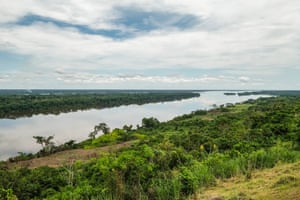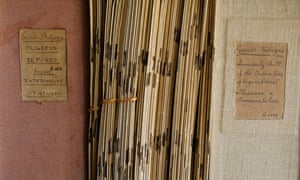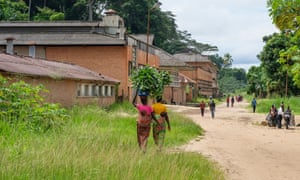A cache of decaying notebooks found in a crumbling Congo research station has provided unexpected evidence with which to help solve a crucial puzzle – predicting how vegetation will respond to climate change.
The treasure trove of tree growth data dating from the 1930s was found by the biologist Koen Hufkens in a tumbledown building at the Yangambi Biological Station, which was once Africa’s leading forest and agriculture research institution. Combined with other records, the recovered data allows Hufkens to make improved predictions about the health of the forest.
Hufkens, of Ghent University in Belgium, began researching the Congo Basin about five years ago. He had planned to install a high tech monitoring station known as a carbon flux tower in Yangambi. The instruments are indispensable for observing the way plant life responds to climate change and have become standard gear for studying forests in North America and Europe, as well as a handful of locations in the Amazon
Jungles such as the Congo forest play a critical part in controlling the rate of global warming; vegetation sucks up about 25% of the carbon dioxide we spew out of our tailpipes and smokestacks. Scientists believe much of this CO2 ends up stored in the trunks of tropical trees, with the Congo forest absorbing about 250bn tonnes of carbon dioxide a year.
But research shows the tropical carbon sink is faltering. This means CO2 will build up faster in the atmosphere and temperatures will rise more quickly.
Scientists are working to understand better how tropical forests respond to shifts in rainfall. The Congo forest, second only to the Amazon in size, is particularly hard to study. Poor infrastructure, unstable governments and civil war have hindered systematic research. But understanding the Congo is important – it appears to be drying out, and it is hard to say how it will behave in a drier climate.

In 2013, Hufkens flew to Yangambi and made copies of the old notebooks and annual summaries. He arrived just in time. The herbarium’s roof was caving in and the documents were already exposed to incessant rains, leaving them water-stained. Rodents had gnawed on some of them.
But Hufkens was delighted. The collection contained weekly observations of 2,000 trees between 1937 and 1958. Technicians had meticulously noted when trees flowered, fruited, dropped fruit and lost leaves.
The archive was a treasure, but there was a serious problem. The hand-written notations could not easily be digitised for statistical analysis. Up to 100,000 observations needed to be transcribed tediously into a spreadsheet. Hufkens estimated it would take him a full year, more time than he had for the work.
In 2015 Hufkens stumbled across Zooniverse, a website for enlisting online volunteers to help scientists perform the necessary but tedious tasks that research often requires. Through the site, 1.5 million volunteers have helped classify galaxies, transcribe old ship logs and identify individual whales by their flukes.
Hufkens digitally sliced up the scans he had made in Yangambi into thousands of matchbook-size photos, each containing a year’s information from a single tree. Volunteers on the site examined one photo at a time. In a matter of seconds they could transcribe the visual information into a form that could later be assembled into a complete data set. About 8,000 volunteers worked an average of 90 seconds per visit, perhaps on the bus to work or during TV commercials.

After just over a year, the virtual team finished processing the huge collection last March and Hufkens is now correlating tree behaviour with Yangambi’s weather records.
The European Union has recently authorised a grant to finally erect the longed-for flux tower at Yangambi, but it will take years for researchers to gather enough data to draw any conclusions. By relying on the kindness of strangers, however, Hufkens is already a long way toward predicting the Congo forest’s future.
- Reporting for this story was supported in part by the Pulitzer Center on Crisis Reporting and the Whole Systems Foundation.

No comments:
Post a Comment